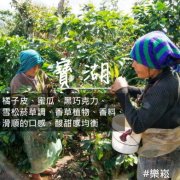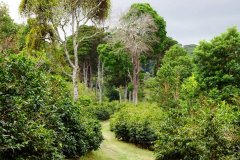Costa Rica Tarazu Shepherd Boy Manor processing Plant Information Centennial washing Technology Shepherd Boy Manor Coffee

For professional baristas, please follow the coffee workshop (Wechat official account cafe_style)
Introduction to Tarazhu, Costa Rica
Costa Rican coffee cultivation was introduced by Cuba in 1779 and exported for the first time in 1820. There are about 32000 coffee farmers, with an average planting area of less than one hectare (10000 hectares) per farmer. Costa Rica has a population of 41 billion (2006), with a coffee planting area of 82500 hectares and an annual production of 1.7 million bags (60kgs per bag). The annual domestic consumption is 380000 bags, with an average annual consumption of 5.5kgs per national, which is higher than that of Japan (consumption 4kgs). At present, the people of Taiwan are only slightly higher than 1kg.
The seven major producing areas in Colombia are: Tarrzu, Tres Rios, Orosi, Central Valley, West Valley, Turrialba and Brunca.

Tarazhu-Shepherd Boy Manor introduction:
The Shepherd Boy processing Plant is currently owned by the Tarazu Cooperative (Coope Tarrazu), which was established in 1970. The processing plant is located near the town of San Marcos, deep in the Tarazu producing area, and the coffee plantations that join farmers are mainly on the volcanic hillside with an average elevation of about 1450 meters above sea level.
Since November every year, cooperative farmers tour coffee plantations irregularly to collect red ripe fruits by hand and transport them to the treatment plant below; the shepherd boy treatment plant uses traditional washing treatment to treat raw beans, and the abundant and clean water from the Rio Pirris River next to the treatment plant provides good conditions for water washing treatment.
The beans, named after "Shepherd Boy Manor", are coffee beans produced by the cooperative under "European rules" and are the cooperative's highest-grade product. Volcanic soil, careful care of farmers, high-maturity berries, clean water, proud century-old washing process, and the final "European rules" treatment process to completely remove defective beans by hand, ensure that the flavor of each cup of coffee will reveal its introverted demeanor in unexpected purity.
Its gentleness is not without characteristics, but the complexity and depth that will soon be displayed need to be carefully savoured when the coffee is slightly cold-savoring the smell of stone almonds slipping into the mouth from the rim of the cup and the creamy mellowness that followed, with delicate acidity and sweetness.

Tarazhu-Shepherd Boy Manor Coffee Flavor description
Detailed introduction:
Producing area: Costa Rica-Tarazu
Producer: shepherd Boy Manor processing Plant
Grading: European extremely hard beans (SHB EP)
Treatment: washing
Varieties: Caturra, Catuai
Altitude: 1450 m
Harvest time: November to March
Flavor: grass, fried almonds, cream corn, jujube and caramel
Important Notice :
前街咖啡 FrontStreet Coffee has moved to new addredd:
FrontStreet Coffee Address: 315,Donghua East Road,GuangZhou
Tel:020 38364473
- Prev

Guatemala Vivitenango-Treasure Lake Estate Information Sheet Washed Treasure Lake Estate Coffee Flavor Description
Guatemala Vivet South Fruit Producing Area Introduction: Guatemala is located in the Central American Isthmus, where many volcanoes form mountains and plateaus, producing high-quality Central American high-altitude extremely hard coffee beans, the world's ninth largest coffee bean producer. The country can be divided into eight coffee-producing regions Antigua, Akatango, Attilan, San Marcos, New Oriental, Coban, Farrahannis, Vivi
- Next

Panama Vacan Valley Divine Comedy Manor Information Divine Comedy Manor Sunlight Red Yellow Kadura Coffee
Professional barista exchanges, please pay attention to coffee workshop (Weixin Official Accounts cafe_style) Panama Vacan Valley Divine Comedy Manor Introduction: A coffee renaissance journey This is a quiet coffee garden located on the hillside southwest of Paso Anqiu Town. Since visiting and introducing the washed beans of this estate for the first time more than two years ago, it has become a resident bean: Divine Comedy Manor Although it has Divine Comedy Manor,
Related
- Detailed explanation of Jadeite planting Land in Panamanian Jadeite Manor introduction to the grading system of Jadeite competitive bidding, Red bid, Green bid and Rose Summer
- Story of Coffee planting in Brenka region of Costa Rica Stonehenge Manor anaerobic heavy honey treatment of flavor mouth
- What's on the barrel of Blue Mountain Coffee beans?
- Can American coffee also pull flowers? How to use hot American style to pull out a good-looking pattern?
- Can you make a cold extract with coffee beans? What is the right proportion for cold-extracted coffee formula?
- Indonesian PWN Gold Mandrine Coffee Origin Features Flavor How to Chong? Mandolin coffee is American.
- A brief introduction to the flavor characteristics of Brazilian yellow bourbon coffee beans
- What is the effect of different water quality on the flavor of cold-extracted coffee? What kind of water is best for brewing coffee?
- Why do you think of Rose Summer whenever you mention Panamanian coffee?
- Introduction to the characteristics of authentic blue mountain coffee bean producing areas? What is the CIB Coffee Authority in Jamaica?

